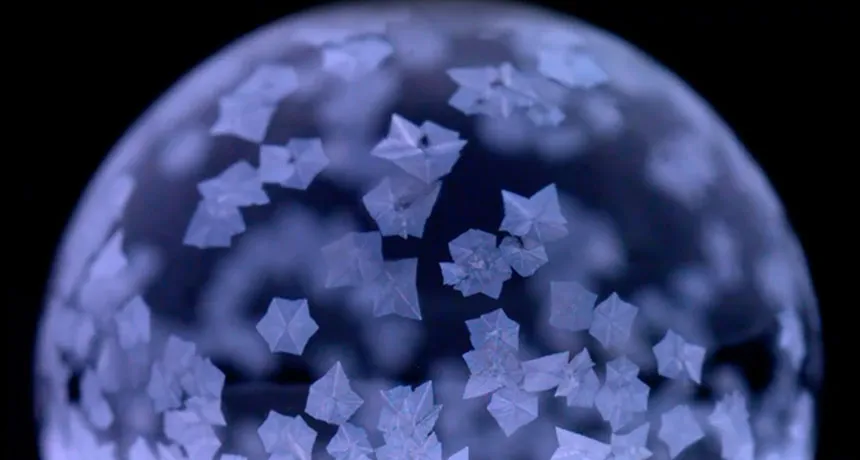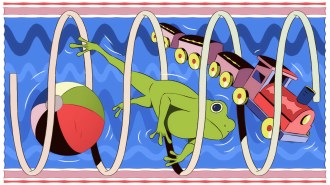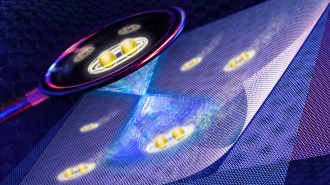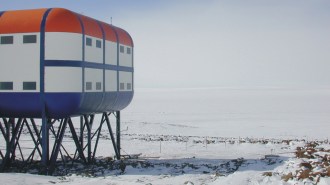How freezing a soap bubble turns it into a ‘snow globe’
Differences in surface tension create currents in soapy films that move ice crystals around

THIN ICE A patchwork of ice crystals swirls across the surface of a soap bubble as it freezes. The glittery display is caused by a mismatch in surface tension in different regions of the soapy film.
F. Ahmadi, C. Kingett and J. Boreyko







